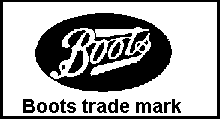

A BRIEF HISTORY OF NOTTINGHAMSHIRE
| Nottinghamshire lies in the eastern-central area of England, covering |
| an area of 844 square miles. The county is divided by the River Trent |
| which for centuries was the boundary of the two halves of England. |
| Evidence of some of the first settlers of the county date to circa |
| 43,000 B.C. After the Roman and during the Anglo-Saxon period, |
| the first mention of Nottingham itself is from the Anglo-Saxon |
| Chronicle of 867 (mentioned as Snotengaham). |
| The actual shire of Nottingham was created between the late 9th |
| century and the early 11th century, being raised to county status in |
| 1448 by King Henry VI. |
| The Pilgrim Fathers. |
| Many of the Pilgrim Fathers came from villages around the Nottingh- |
| amshire village of Scrooby. William Brewster, author of the Mayflo- |
| wer Compact, was the son of Scrooby's postmaster. Brewster and |
| twelve-year-old William Bradford, who in later years became |
| Governor of the New England settlement, were members of Richard |
| Clyftons congregation at the nearby village of Babworth. |
| From the village of Sturton-le-Steeple came William and Susanna |
| White, along with their son. Their second child was the first 'Englis- |
| hman' born in the new world. Also from the village came Catherine |
| Caver, wife of the first Governor, John Caver. |
|
| The Civil War. |
| Probably due to Nottingham's record of defending the monarchy |
| during previous upheavels (the Battle of East Stoke in the War of |
| the Roses being one example), King Charles I chose to raise his |
| standard here in 1642. However, local response to his call to arms |
| raised only 300 men. Once the King had marched away, the town |
| became a Parliamentarian stronghold. |
| In 1646 Charles surrendered himself to the Scots (hoping for bett- |
| er treatment than if he had surrended to the English) at the Kings |
| Head public house (now called the Saracens Head) Southwell. |
|
| After the restoration of the monarchy in 1660, Henry Ireton, who |
| had been one of the local signataries to King Charles's death |
| warrant, had his body exhumed (he died in 1685), paraded through |
| the streets of London, and was hung, drawn and Quarted. His head |
| was then placed at Westminster Hall, where it was still to be seen |
| many years later. Another local traitor, Colonel Francis Hacker, |
| endured the same punishment whilst still alive. |
| Trade and Industry. |
| Initially Nottingham's prosperity depended greatly on the River |
| Trent and the main river crossing, Trent Bridge. As well as being |
| used for transporting materials and finished goods, an additional |
| source of income was gained by charging tolls. |
| Coal, wool dyeing, ceramics and brewing (Nottingham was |
| ideal for brewing due to the large number of caves under the town), |
| were some of the earliest industries in the town. Although by the |
| mid 18th century Nottingham had a thriving textile industry, it was |
| the arrival to the town in the late 1760s of James Hargreaves and |
| later Richard Arkwright that really boosted Nottingham's cotton |
| and lace industry. |
| Sir Richard Arkwright 1732-1792 |
| 19th And 20th Century Nottingham. | |
| Until the Nottingham Enclosures Act of 1845, expansion of the | |
| town was restricted to within the old medieval town walls. This | |
| led to a very cramped and insanitary existance for many of the | |
| occupants. An indication of how bad conditions were, comes | |
| from a report written by J. R. Martin in 1844, "The average age | |
| at death of the inhabitants of several of the Nottingham districts | |
| is only 14 or 15 years, a lower rate than has yet been ascertained | |
| to exist in any other city, or within the British Empire.". |
| Typical Victorian slum. Demolished circa 1913. | |
| Other than coal and lace, Nottingham's industry over the past | |
| century or more has been dominated by three companies. Each | |
| created by men of vision. John Player, who founded John | |
| Player & Sons Tobacco Company. R. M. Woodhead along with | |
| Paul Angois founded the Raleigh Cycle Company. And Jesse | |
| Boot, founder of Boots The Chemists. |

